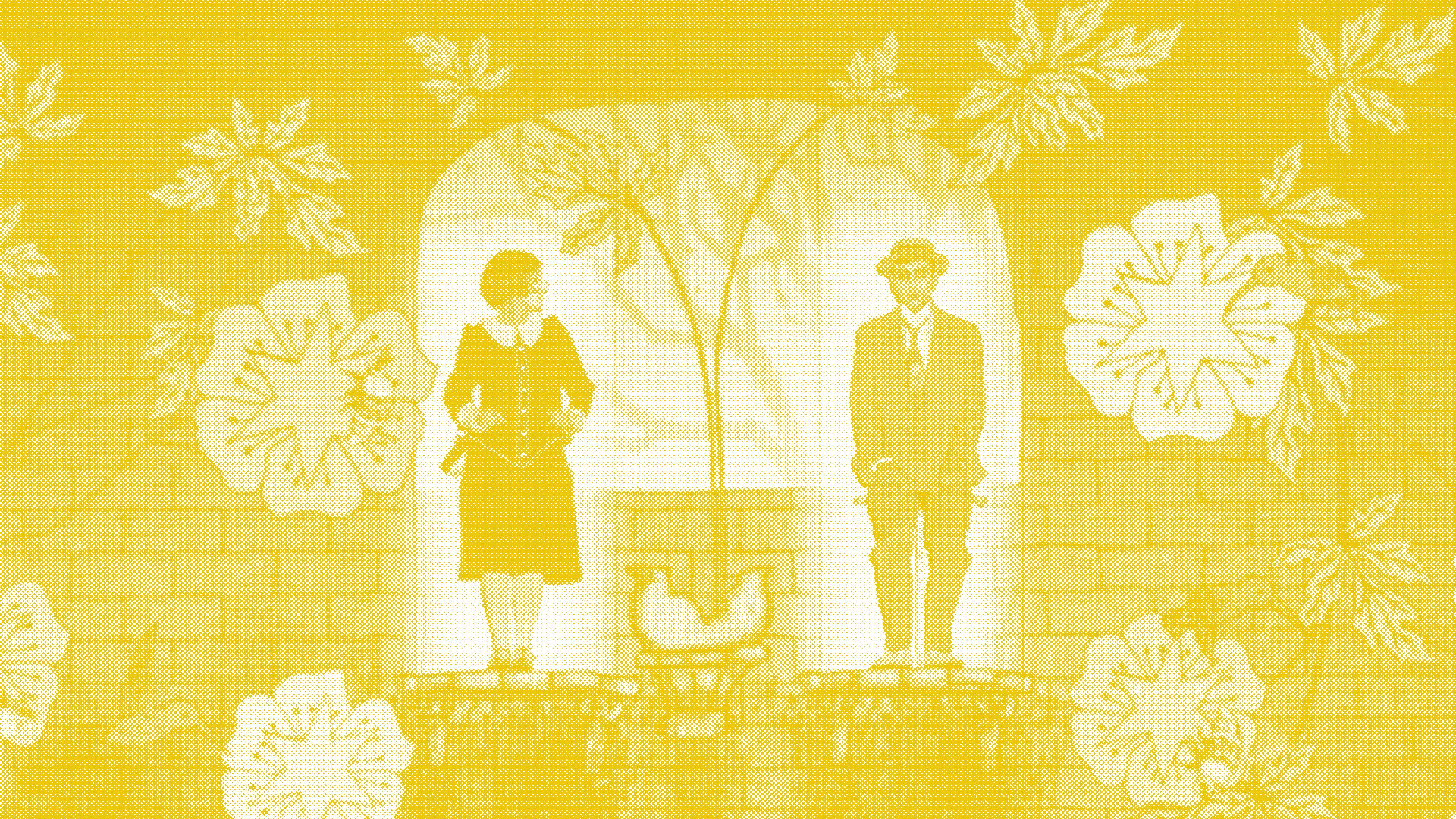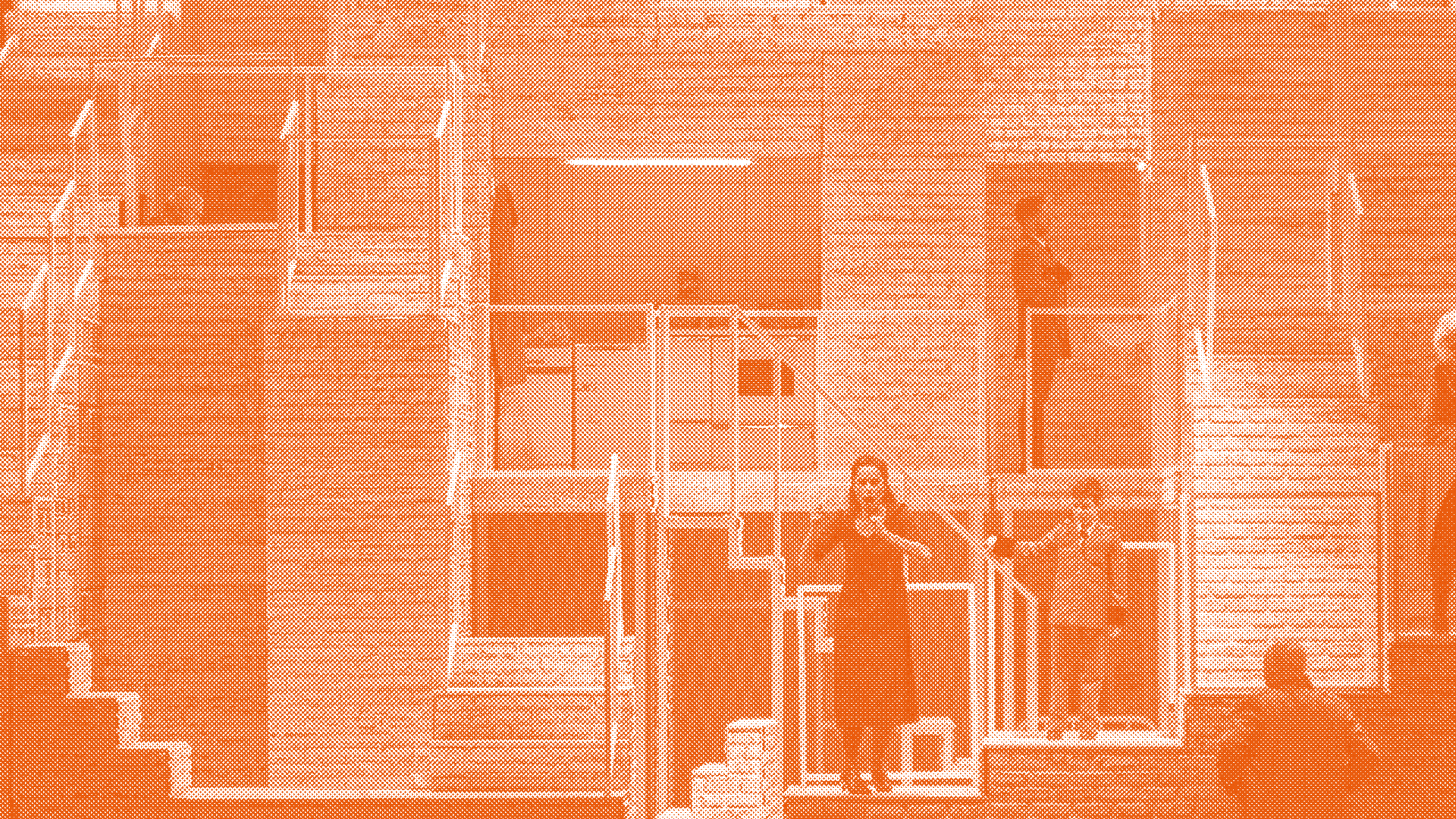
New trends
CHAPTER 1 / INTRODUCTION
In chapter 8 we are brought back to the present and explore the new trends in the world of opera. Technological innovations, burning issues of the day, electronic instruments and algorithms compose the modern-day realm of opera. Choreographer Marianna Kavalieratou talks about the evolution of the role of opera performers and explains the ways in which a participatory performance can be compared to a living organism.
Choreographer Marianna Kavalieratou talks about the evolution of the role of opera performers and explains the ways in which a participatory performance can be compared to a living organism.
The following texts are written by Artemis Ignatidou.
CHAPTER 2 / ROTATING SETS, DIGITAL PROJECTIONS AND TECHNOLOGICAL INNOVATION
So here we are today, with a 400-year old tradition behind us and a future that promises 3D projections, on-stage flight and other technological innovations we can’t even imagine yet.
Contemporary artists and technicians specialized in set, costume, and lighting design, take advantage of the latest technological advancements to provide audiences with immersive experiences. In the 2010 production of Das Rheingold at the Metropolitan Opera, for example, the gods ascended vertically the rocky set to Valhalla, bathed in 3D prismatic light, and not only was I not there to witness it with my own eyes, but I don’t even know what “3D prismatic light” is.59Abbate, C., Parker, R. 2012. A history of opera, p. 372
Similarly, for the 2016 production of the opera L’amour de Loin, the lighting designer represented the Mediterranean Sea as a layer of thin, horizontal strips of LED lights that gave the set an impressive sense of movement.60https://www.metopera.org/user-information/nightly-met-opera-streams/articles/sea-of-lights/ In 2022, Don Giovanni at the Opéra National in Paris was performed on a set of concrete buildings whose doors, windows, walls and stairs moved constantly but at a speed almost imperceptibly slow. Thus, the audience became aware of the illusion only when the viewing angle had completely changed.61https://operawire.com/opera-national-de-paris-2021-22-review-don-giovanni/ Similarly, in the Greek National Opera’s production of Alban Berg’s opera Wozzeck, the entire set– as well as its individual parts– rotated, resulting in the creation of constantly different spaces of stage action.
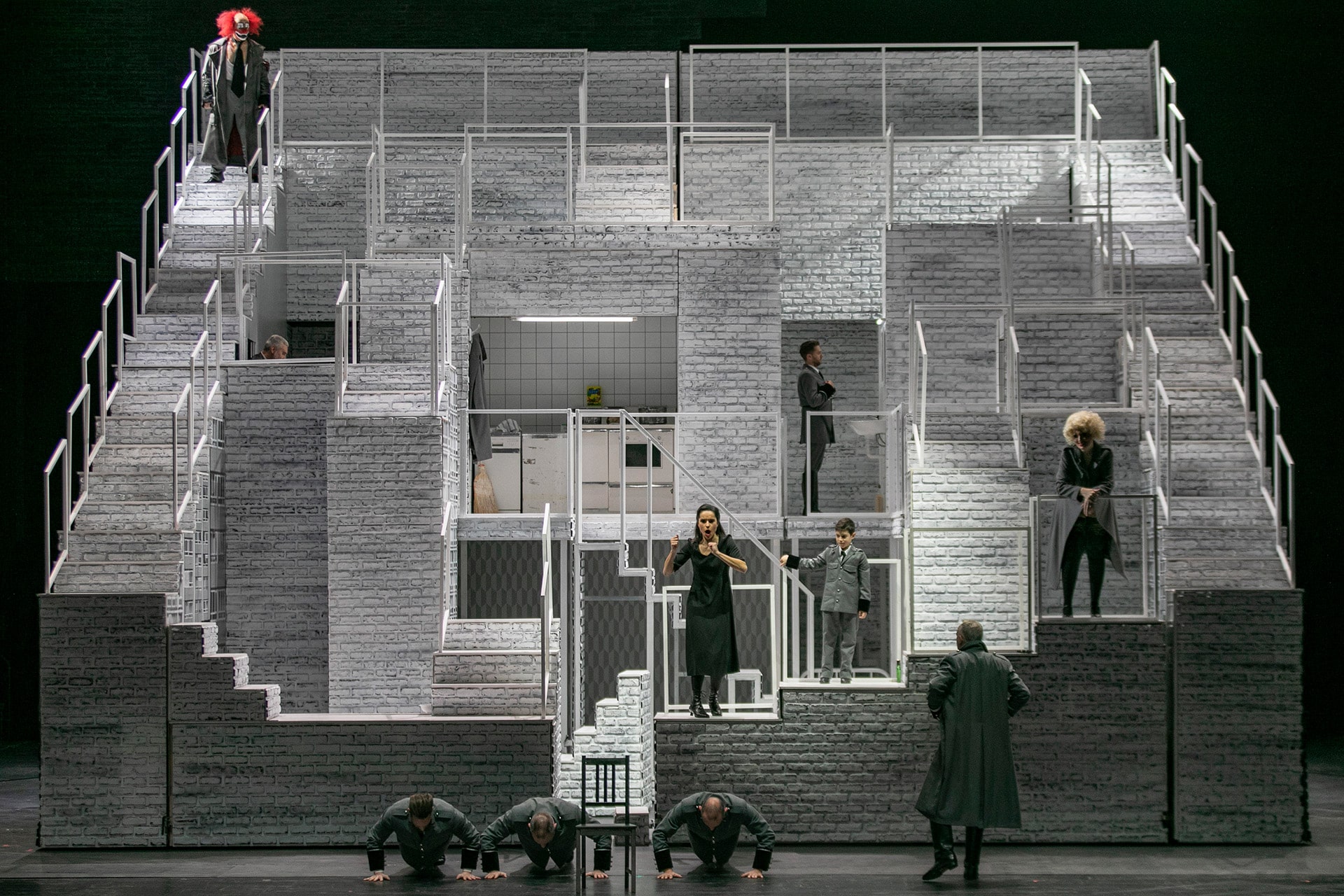
Highlights from the Greek National Opera production of the opera Wozzeck of Alban Berg in musical direction of Vassilis Christopoulos and stage direction of Olivier Py, Stravros Niarchos Hall, 2020
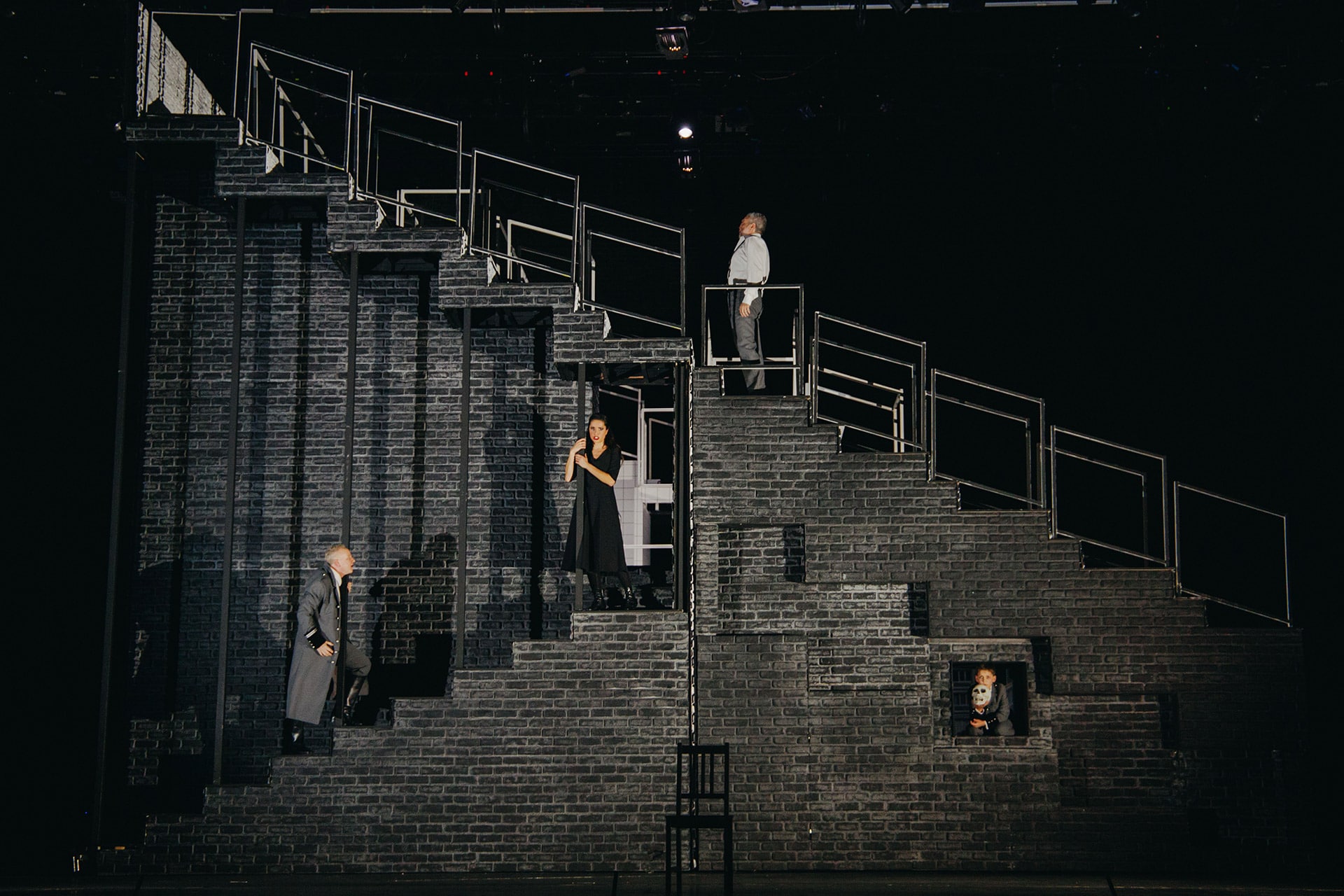
Highlights from the Greek National Opera production of the opera Wozzeck of Alban Berg in musical direction of Vassilis Christopoulos and stage direction of Olivier Py, Stravros Niarchos Hall, 2020
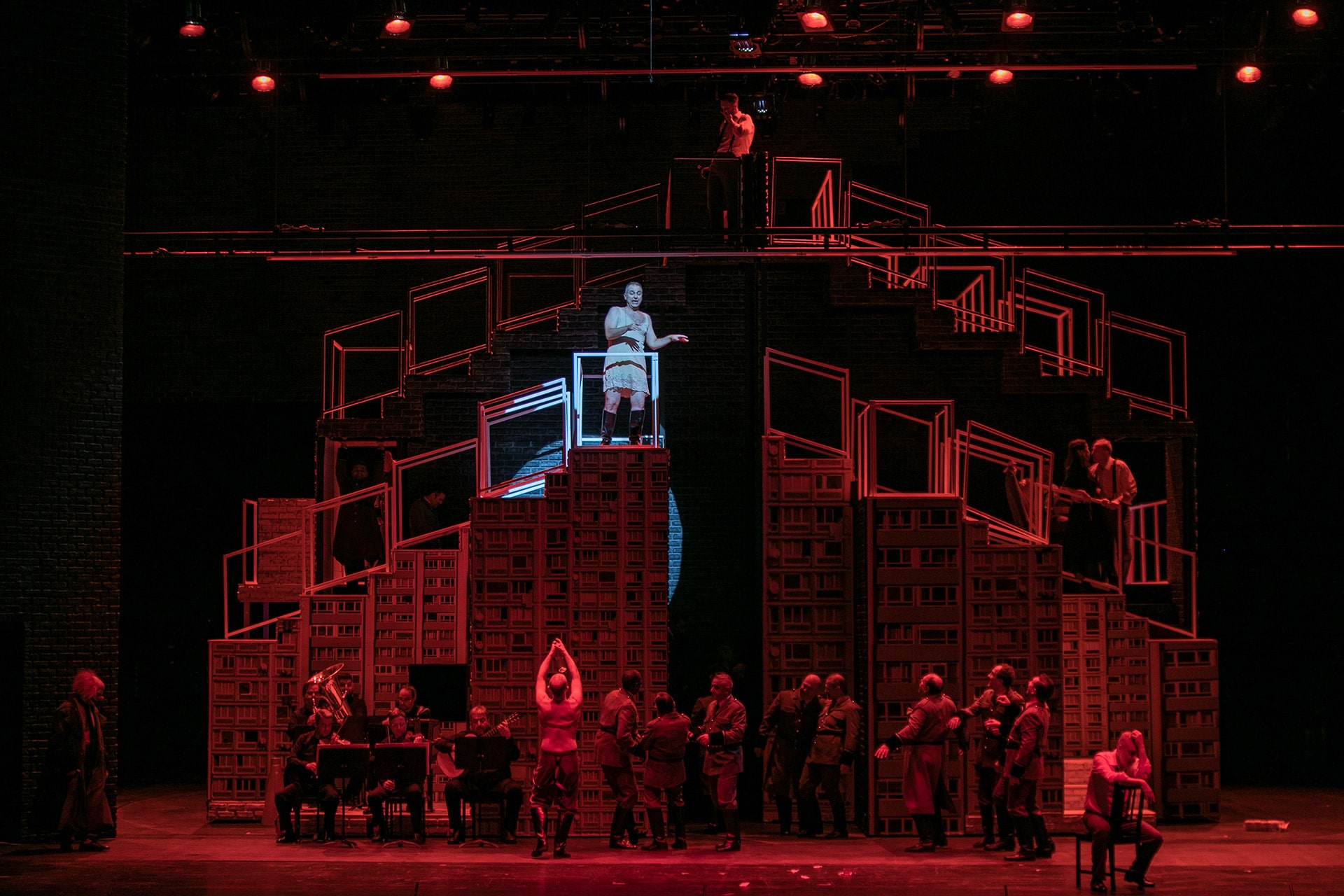
Highlights from the Greek National Opera production of the opera Wozzeck of Alban Berg in musical direction of Vassilis Christopoulos and stage direction of Olivier Py, Stravros Niarchos Hall, 2020
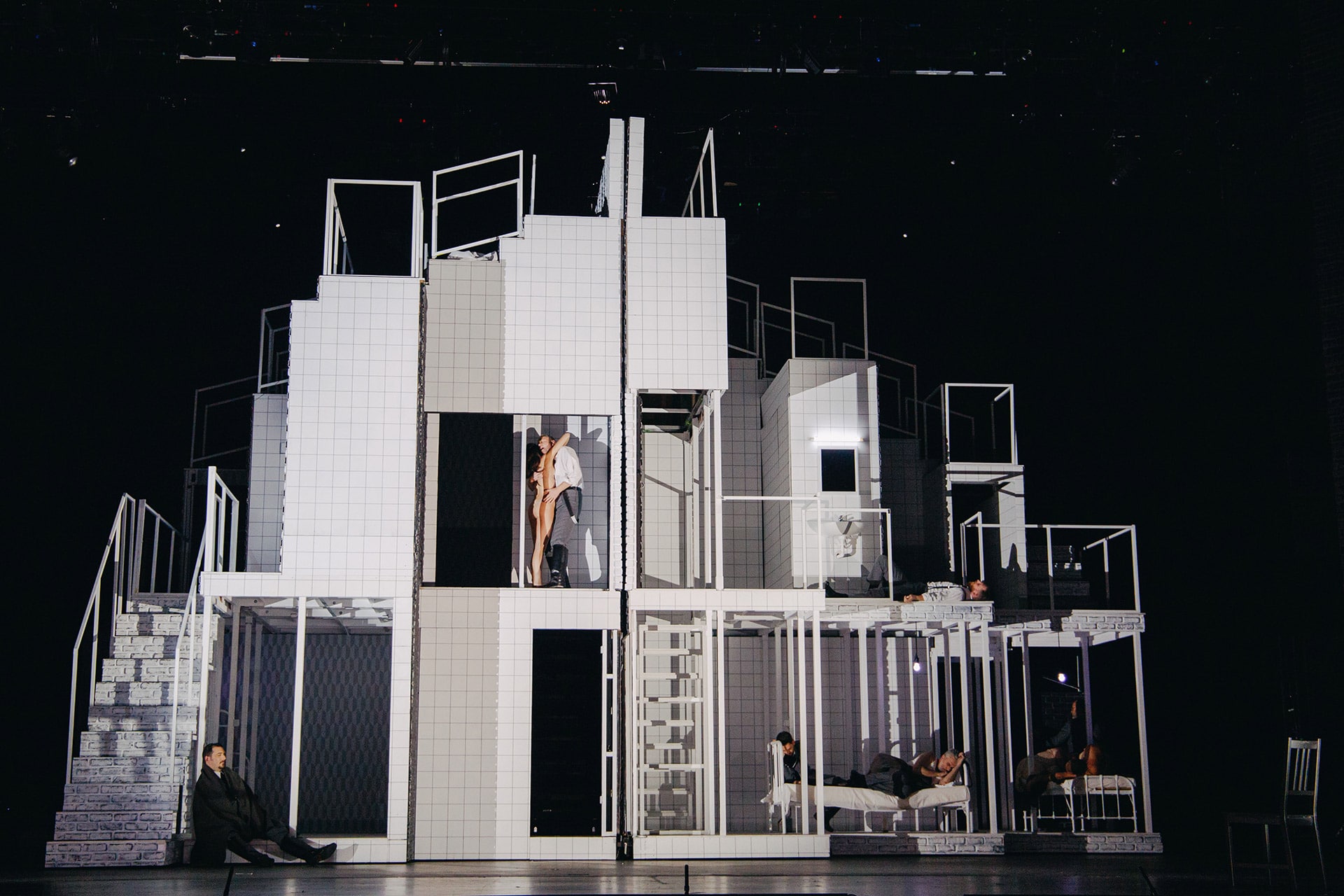
Highlights from the Greek National Opera production of the opera Wozzeck of Alban Berg in musical direction of Vassilis Christopoulos and stage direction of Olivier Py, Stravros Niarchos Hall, 2020
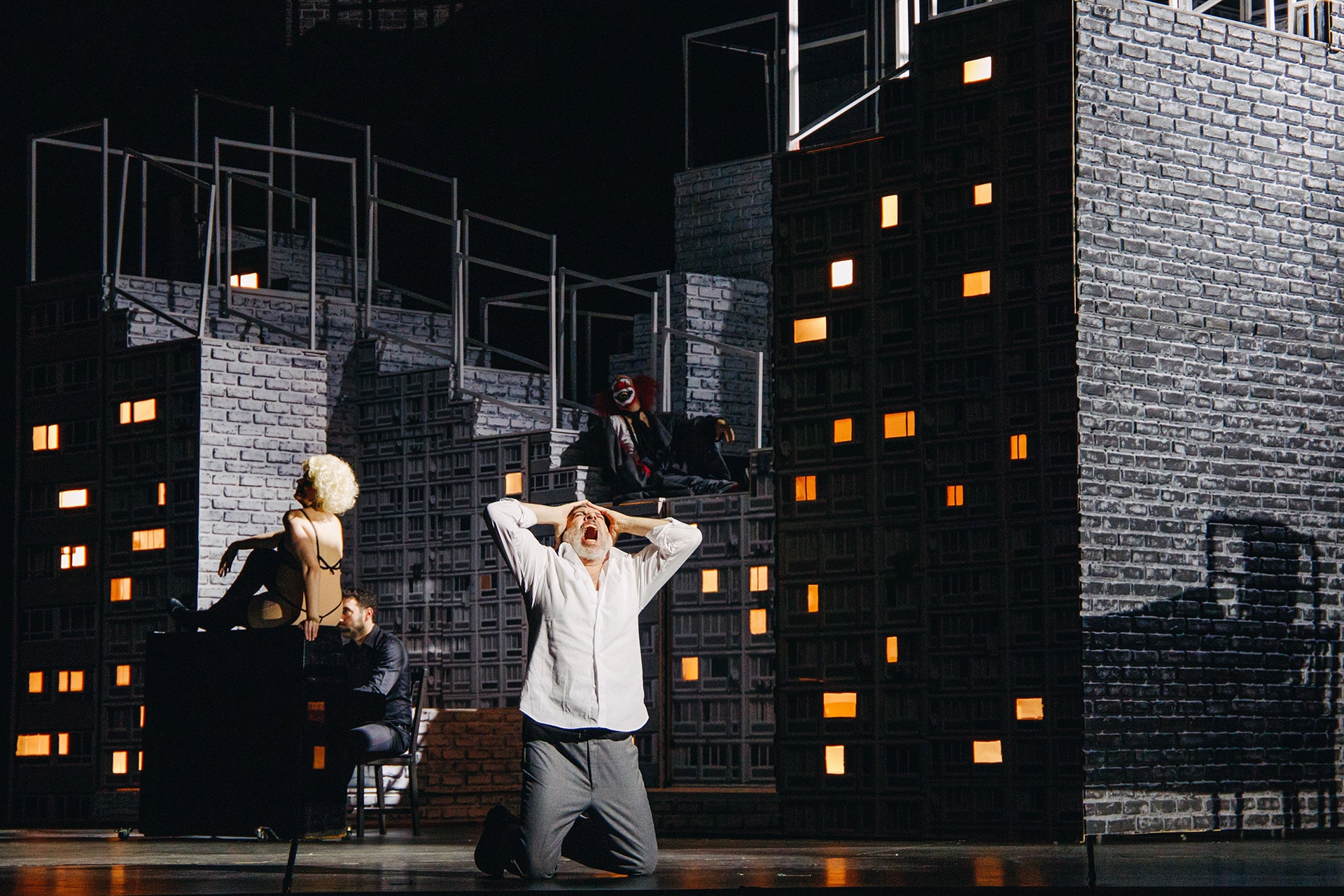
Highlights from the Greek National Opera production of the opera Wozzeck of Alban Berg in musical direction of Vassilis Christopoulos and stage direction of Olivier Py, Stravros Niarchos Hall, 2020
Under the heading ‘new trends’, we will find the use of new technologies, which give set and lighting designers the opportunity to impress audiences and reveal aspects of works that not even their composer could imagine.
CHAPTER 3 / OPERA & SOCIETY: COMMUNICATING VESSELS
Similarly to other arts, the opera world has addressed some of the pressing issues that concerned us in recent years. Economic crises, gender inequality, environmental disaster and racial inequality have taken over the operatic stage to represent and comment on issues that have made headlines.
In response to the historically unequal treatment of African-Americans, Latinx and other non-white U.S. citizens, in 2022 Ludwig van Beethoven’s Fidelio became an activist of the Black Lives Matter movement, incarcerated in a contemporary prison in New York City.62https://www.npr.org/sections/deceptivecadence/2022/02/19/1081609788/fidelio-black-lives-matter-opera?t=1645306489530 In Greece, in 2021 the collective FYTA adapted the opera Orfeo, to highlight the state’s indifference to violence against members of the LGBTQIA+ community and as a tribute to the murdered activist Zak Kostopoulos. Similarly, the adaptation of La belle Hélène that you have already seen, parodies and comments on stereotypes of the past that still prevent gender equality in Greek society. In the field of contemporary technologies of creating and reproducing opera and environmental awareness, in 2013 Matthew Burtner presented the technological musical event Auksalaq. Auksalaq, a word that means ‘melting ice’ in the Inupiat language of Alaska, was presented as a series of parallel musical events about climate change, occurring simultaneously in many parts of the world. Audiences around the world could interact with the musical elements of the event through a mobile app, an element that aspired to show our planetary interconnectedness and the fact that our actions may have environmental impact on other parts of the planet.63http://matthewburtner.com/auksalaq/

Offenbach’s La belle Hélène by Kornilios Selamsis parodies the social stereotypes that still obstruct the equality of the sexes. GNO Learning & Participation Department
CHAPTER 4 / NEW MUSICAL LANGUAGES IN OPERA
Music, from which we started and which was the first “new trend” that transformed ancient drama into a new art form, changed significantly over the last century and this change affected in part the way we perceive opera itself.
Have you heard, for example, John Cage’s Europeras cycle? In these five operas, performed between 1987 and 1991, John Cage used extracts from 18th and 19th century operas that are performed live during the performance, in combination with recordings of arias. In other words, the composer did not compose new music but reused music that had been written over the past two centuries. The libretto is a collage of excerpts from earlier works in a random order, and the audience is considered part of the piece. See in the excerpt below the stage arrangement and the different actions that take place in the performance of Europeras 1 & 2 at the GNO. Listen to this musical collage and imagine the entire performance space, along with the natural sounds and the audience being part of the piece.
Excerpt from Europeras 1 & 2 by John Cage. Conductor: Michalis Papapetrou, stage direction: Zoe Hatziantoniou, visual space curation & stage objects: Petros Toloudis. Alternative Stage of GNO, 2020
Ideas such as the “random” aspect of musical composition, or techniques such as Philip Glass’s minimalism, and spiritual musical quests such as composer Pauline Oliveros’s Lunar Opera, have left a legacy for contemporary composers daring to experiment with the structure of music, and present works based on the tradition of opera without hesitating to innovate.
At the same time, the creation and development of electronic musical instruments and music software programs enriched the musical palette of 20th and 21st century composers, and as a result many contemporary opera works include elaborate musical landscapes of electronic and orchestral music. Video art has also played an important part in these new techniques, since composers often use multiple artistic media in their musical compositions.
For example, find the operas Afterlife (2006) and Upload (film opera, 2021) by Dutch composer Michel van der Aa. These two operas explore the concept of memory and present scenarios where, through the intervention of technology, human memory survives the physical body (Upload) or becomes the main feature of the soul’s experience after the death of the body (Afterlife). In van der Aa’s music the use of technology is part of the compositional process and in his works you will find a collage of live orchestral music and singing, video clips and pre-recorded soundscapes.64https://www.gramophone.co.uk/features/article/michel-van-der-aa-talks-about-his-opera-after-life (τελευταία πρόσβαση: 4.5.2022).
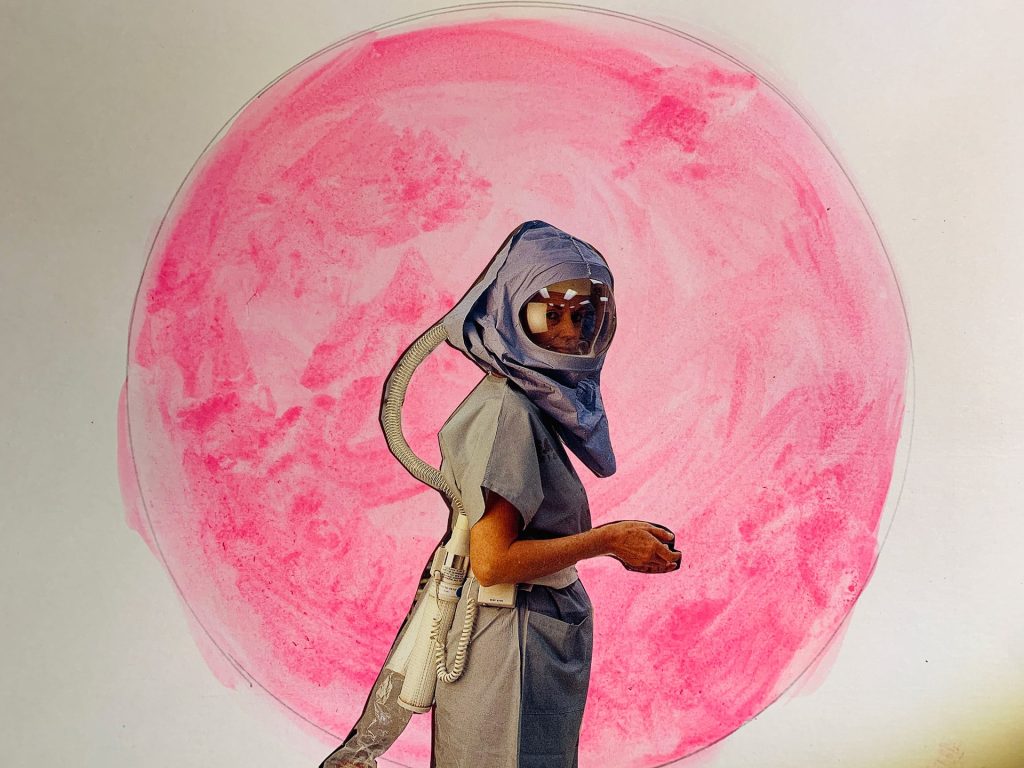
In April 2020 in response to an open invitation by Opera Povera, Pauline Oliveros’ Lunar Opera took the form of an online live performance with over 250 participants and a total duration of 6 hours
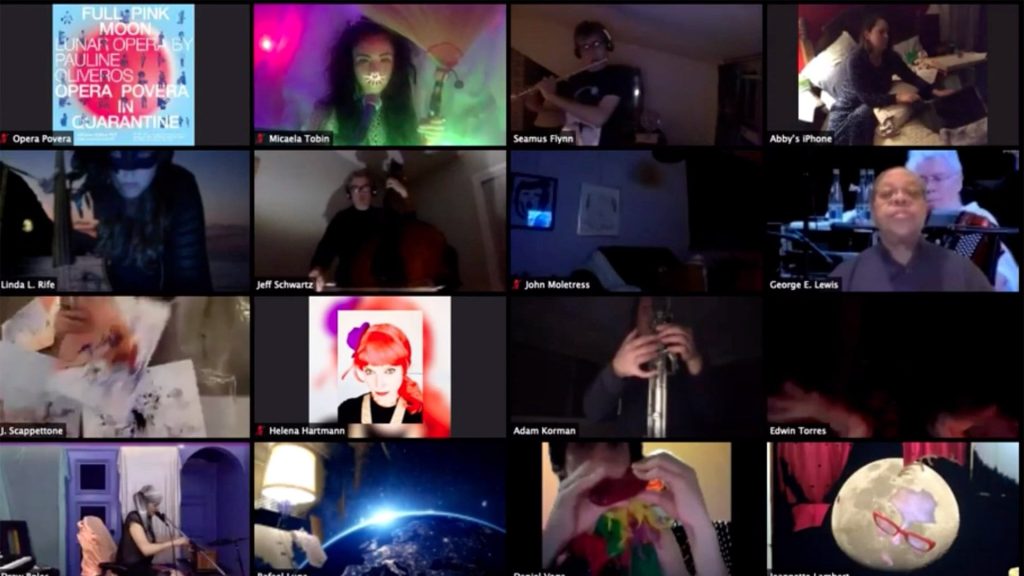
In April 2020 in response to an open invitation by Opera Povera, Pauline Oliveros’ Lunar Opera took the form of an online live performance with over 250 participants and a total duration of 6 hours
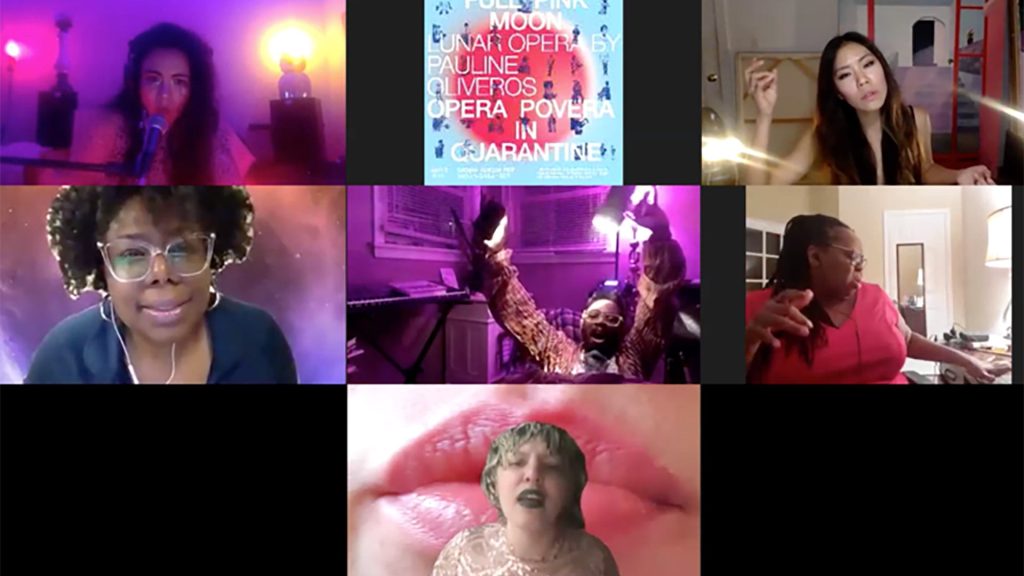
In April 2020 in response to an open invitation by Opera Povera, Pauline Oliveros’ Lunar Opera took the form of an online live performance with over 250 participants and a total duration of 6 hours
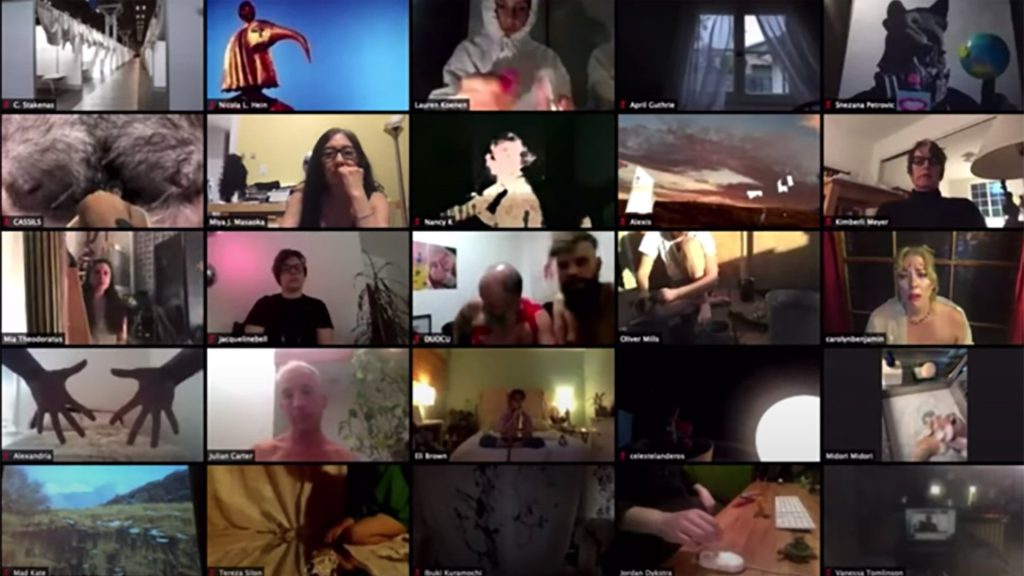
In April 2020 in response to an open invitation by Opera Povera, Pauline Oliveros’ Lunar Opera took the form of an online live performance with over 250 participants and a total duration of 6 hours
Excerpt from Yannis Kyriakides’s Ask Ada. Libretto: Theodora Delavault, conductor: Gregory Charette, visual work & coding: Darien Brito, GNO TV, 2021
Many of the aforementioned new musical, aesthetic and social trends can be found in Yannis Kyriakidis’ music theatre Ask Ada, on a libretto by Theodora Delavault. The main heroine of the play is Ada Lovelace, mathematician and unwanted daughter of Lord Byron. The work’s musical language contemplates the almost independent influence of technology on human society. The piece tells the story of Ada, with the music representing perhaps her greatest achievement: the creation of the first algorithm for a computer program.65https://www.nationalopera.gr/nea-anakoinoseis/item/3819-to-ergo-ask-ada-tou-gianni-kyriakidi-erxetai-stin-gno-tv The algorithm is not only one of the techniques used by the composer in the creation of the work, but it also manifests itself ‘socially’ on stage through the alteration of the singers’ voices and the mixing of acoustic and electronic instruments. Through a sequence of soundscapes that reflect the different aspects of Lovelace’s personality and story, electronic sound becomes an integral part of her narrative, just as algorithms have become part of our everyday life. Listen to the example below to hear how the combination of headphones with electronic music instruments and voice link the story of this 19th century pioneering woman to our present-day experience.
In this section, we have taken a peek into how new trends in opera are related to the entire genre and its constitutive arts as well. Staging, stage and lighting design all benefit from the latest technological trends and inventions to add meaningful depth to productions and impress audiences. Texts become part of soundscapes or are presented in a fragmented, altered and contemporary manner. Performances can occur simultaneously online in many parts of the world, with the audience being able to interact with the music. The topics of new opera works reflect the issues that concern us and represent our experiences in contemporary society. Finally, the music offers its own parallel commentary on the texts and spectacles of the stage, through a musical language that is constantly mutating along with society.
Watch below another excerpt from Ask Ada where speech, music and image offer a dystopic view of the future, prompting the audience to ponder the limits of free will in a reality where algorithms play an increasingly dominant role.
Excerpt from Yannis Kyriakides’s Ask Ada. Libretto: Theodora Delavault, conductor: Gregory Charette, visual work & coding: Darien Brito, GNO TV, 2021
QUIZ / NEW TRENDS
ACTIVITIES / NEW TRENDS
Introduction
In this section we will first explore how contemporary composers may use drawings instead of notes and the staff system. Then we will put to paper sounds of our choice. Can we create a composition using drawings, if we have forgotten how to read notation?
If you had the opportunity to attend La Belle Hélène by Offenbach of Kornilios Selamsis, you may have been surprised by some of the sounds you heard. Perhaps you saw a musician pressing the keys of their wind instrument without blowing on the mouthpiece, thus producing a soft percussive sound, or the violinist pressing the bow so hard on the strings that instead of a note, a noise comes out of the instrument. In the music of Kornilios Selamsis, as in the music of many contemporary composers who will be mentioned below, the soundscape that evolves is not only limited to notes, harmonies and rhythms, but also includes noises and ambient sounds.
But how can a composer depict in the score a sound that has no specific or distinct frequency? How does a composer notate a noise in the score? Is there a note or notes in the staff to represent the sound of wind or the creaking of a door?
Connection to the curriculum
– Music
– Art class
Subjects
– Graphic score
– Soundscapes
– New trends
Suggested teaching hours
3 teaching hours
Educational objectives
– Cultivating audiovisual literacy
– Exploring diverse notation systems
– Cultivating active listening
– Exploring creativity
– Connecting music to the visual arts
Step 1
Firstly, we have to get used to listening to music that does not rely exclusively on standard notation and notes written on a staff. Let’s listen to some compositions that highlight the variety of sounds that musical instruments and the human voice can produce.
– The American composer George Crumb in his series of solo piano works entitled Makrokosmos (1972-79) gives the performer detailed instructions on the objects that should be placed on the piano strings in order to alter its sound. This practice is called “prepared piano”. Listen to the first few minutes of the Makrokosmos series (Primeval Sounds [Genesis I] Cancer) where the pianist plays simultaneously on the low keys and inside the strings of the piano.
– From the family of stringed instruments, it is worth listening to Iannis Xenakis’ work for solo cello entitled Nomos Alpha (1966), which is a classic example of a composition that tests the limits of this musical instrument.
– And if you are intrigued by the aforementioned works, we recommend Luciano Berio’s fourteen Sequenzas, which he composed between 1958 and 2002. Sequenza III, written in 1965 for female voice, is also included in the recommended works for listening in the first grade curriculum (Unit: Rhythm, Sound, Colours). You can find related activities in your textbook, as well as an excerpt of the score.
Step 2
What is, though, a graphic score?
As early as the middle of the last century, when musicians were experimenting with the limits of their art, graphic notation gave composers the opportunity to escape the confinements of staff notation and to present their compositions more openly, a technique that often granted greater freedom to musicians as well. At the same time, the graphic representation of sound and music can be a more inclusive artistic practice, as the knowledge of formal musical notation is not a prerequisite for their performance.
Below you can see some of the graphic elements that Kornilios Selamsis used in the score he wrote especially for the students who participated in the performances. No musical knowledge is required to interpret the score below.

Graphic score by Kornilios Selamsis for the participation of students in the performance of La belle Hélène by Offenbach.
It is important to keep in mind that these images depict the desired sounds and not the objects, or the humans or animals that produce the sounds. For example, if a composer wants to depict the barking of a dog graphically, they will not draw a dog but they will rather depict the sound i.e. the barking.
Let’s think about the basic aural characteristics of dog barking. It is a loud, relatively sharp sound without much variation in volume. Also, we could say that its timbre is harsh. According to this description, dog barking could be represented as follows:

Graphic representation of a dog barking
Let’s now take a look at the basic characteristics of the sound produced by a natural stream of water. It is a low-pitched continuous sound, with mild volume fluctuations and a soft timbre. Therefore, it could be expressed as follows:

Graphic representation of a dog barking
In many cases, these graphic elements are also placed on the staff. This assists in depicting the pitch. For example, element A will have a more bass sound, or lower pitch, than element B.

Graphic representation on the staff system

Graphic representation on the staff system
To get even more familiar with graphic scores, you can search online for images of graphic scores by the following composers.
– Iannis Xenakis
– Anestis Logothetis
– Cornelius Cardew
– György Ligeti (composition title: Artikulation)
Step 3
After becoming familiar with graphic scores and listening to musical works where there is an extensive use of techniques that expand the composer’s sound palette, we can discover the musicality of various sounds and then render them graphically.
First we will imagine the sounds. Here are the descriptions of five different sounds. For each of the sounds described below you will have to remain silent for 30 seconds in the classroom, in order to help your mind bring the sounds to life. Focus on the different qualities of these imaginary sounds. Do they evoke any emotion for you?
– Steps on the marble entrance of an apartment building
– Big sea waves on a sandy beach
– Traffic on a motorway
– Drops of stalactites in a cave
– The ringtone of a mobile phone
Step 4
Each student may choose one of these sounds and render it graphically.
As a conclusion, each student may present their drawing. Observe and discuss in class the similarities and differences between the drawings.


